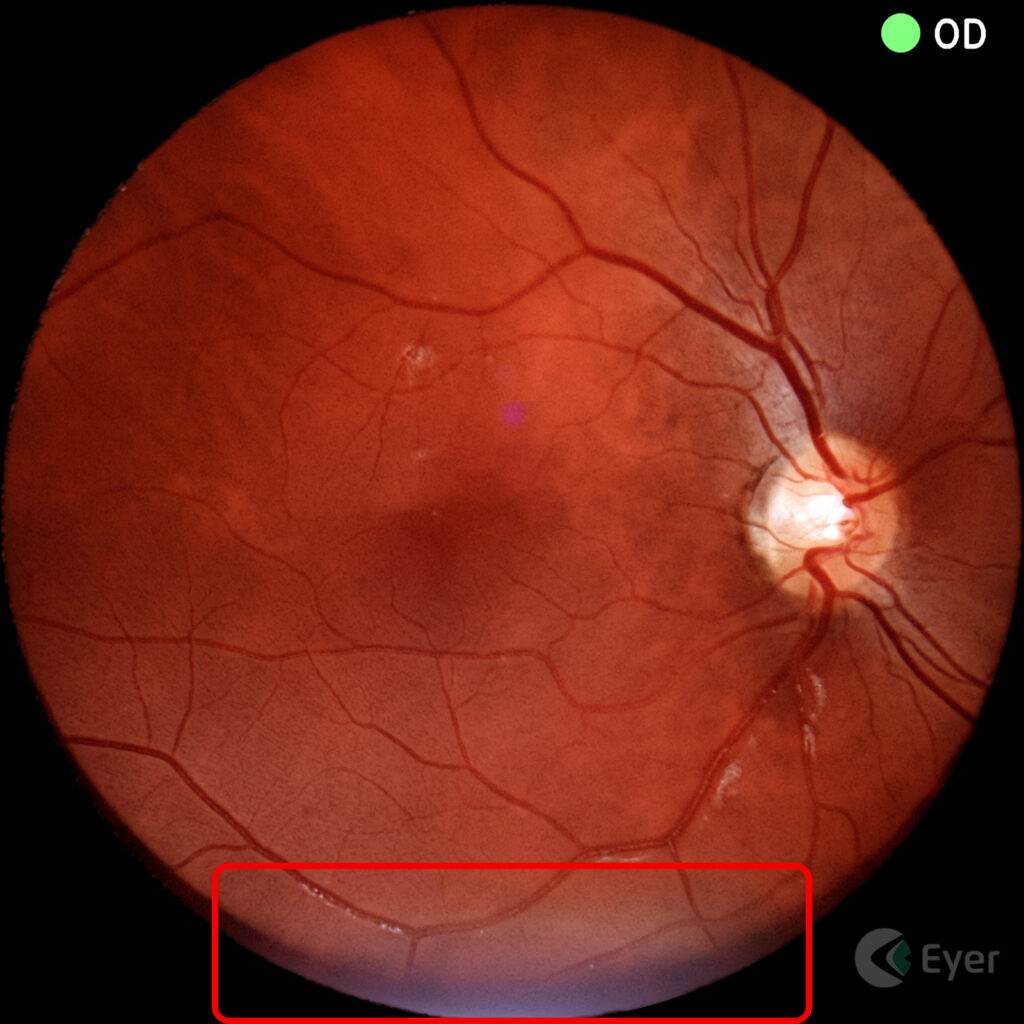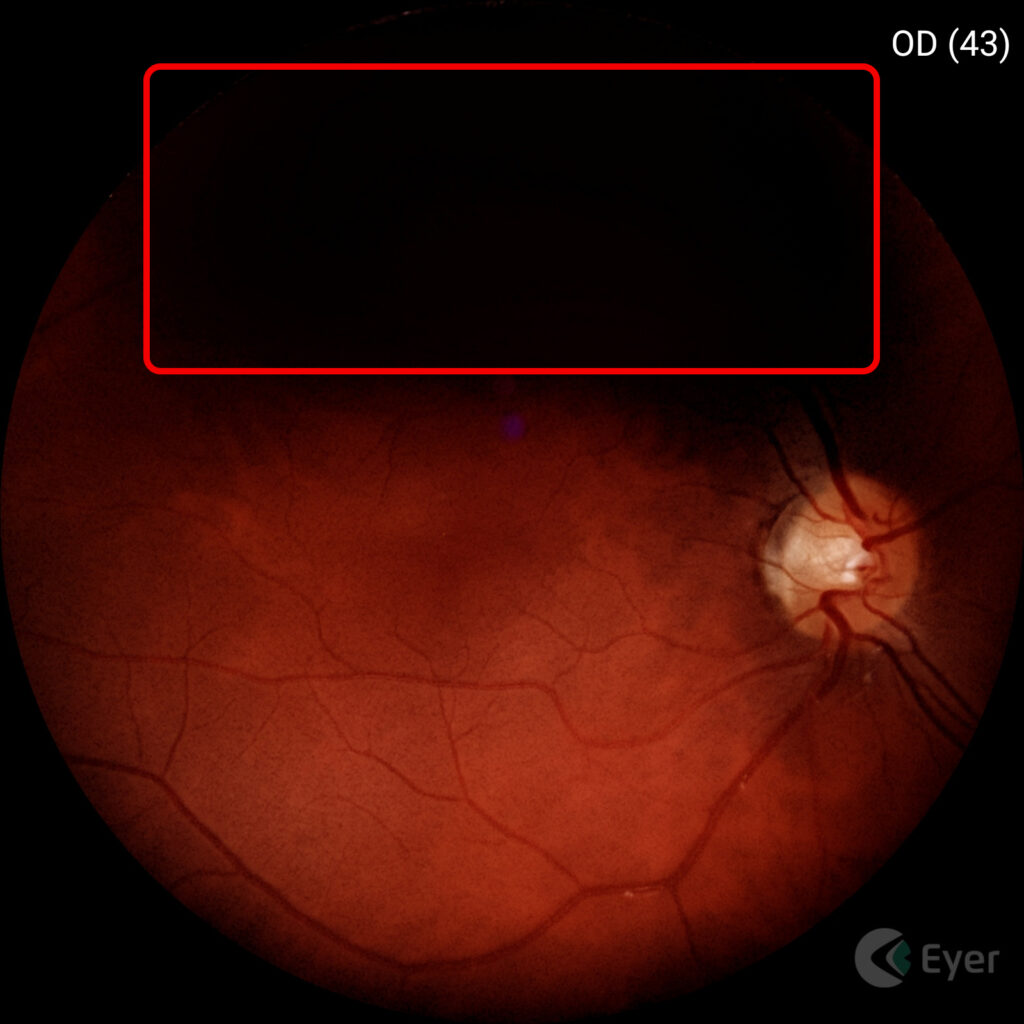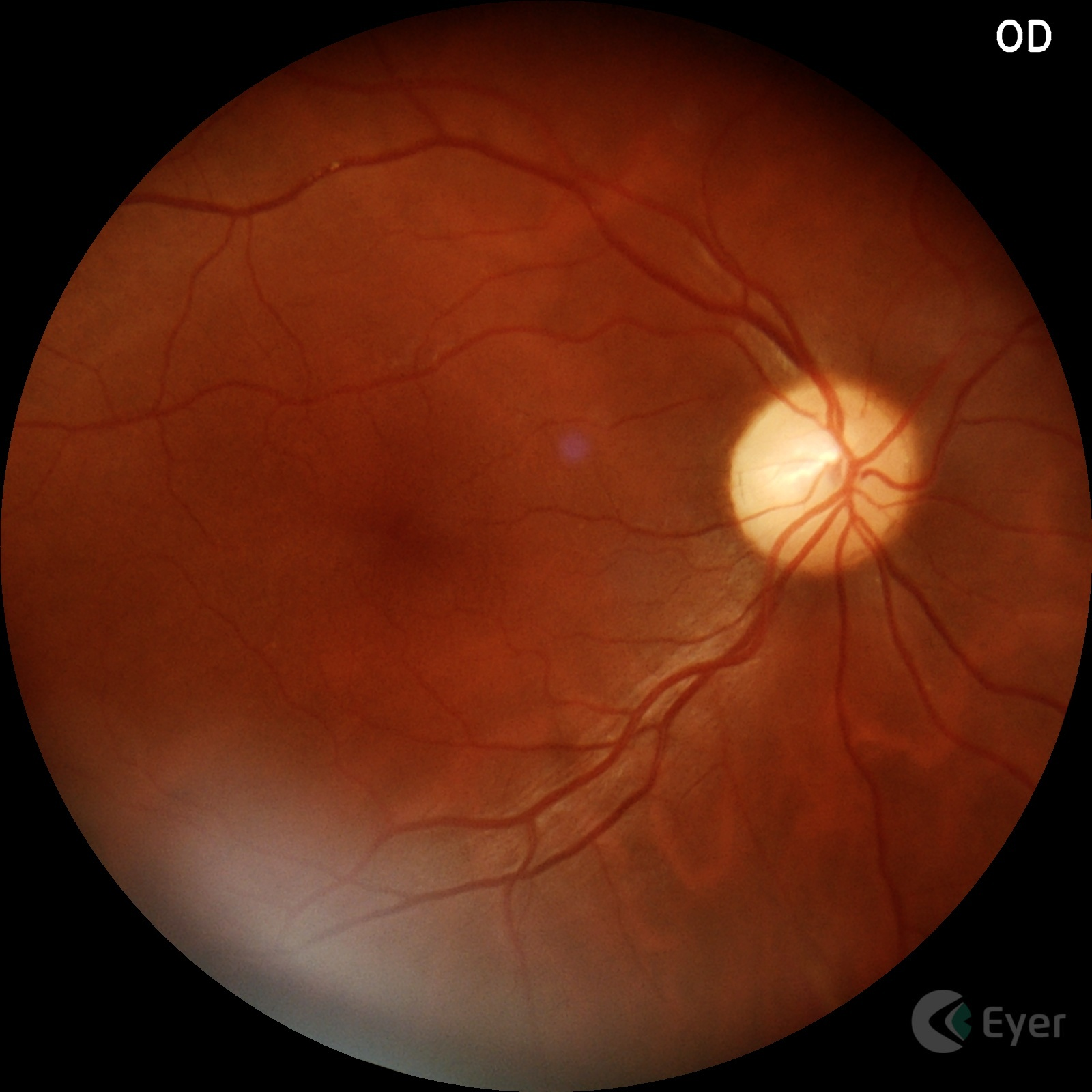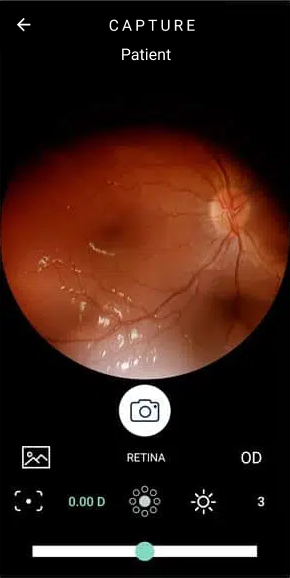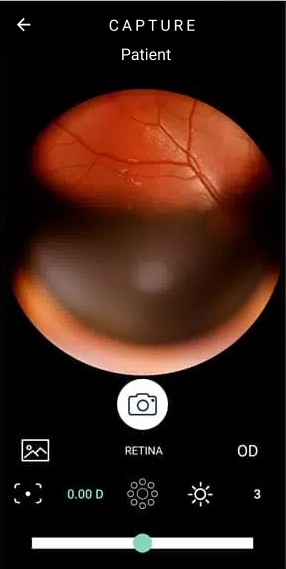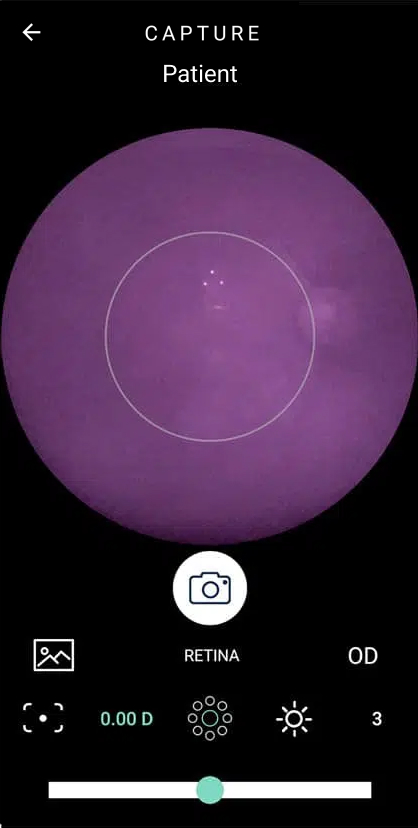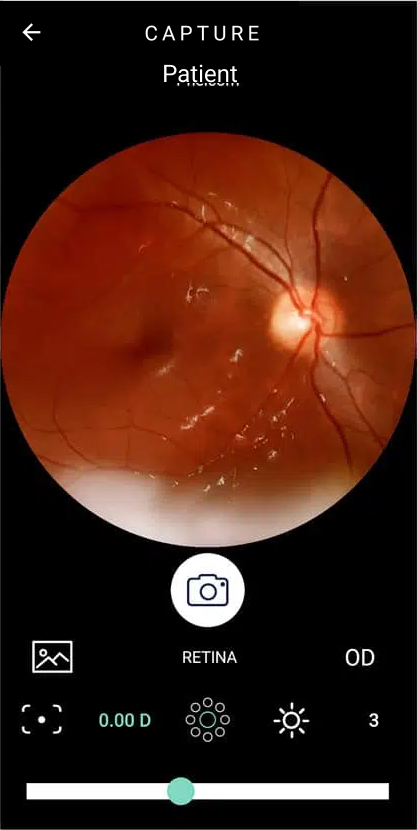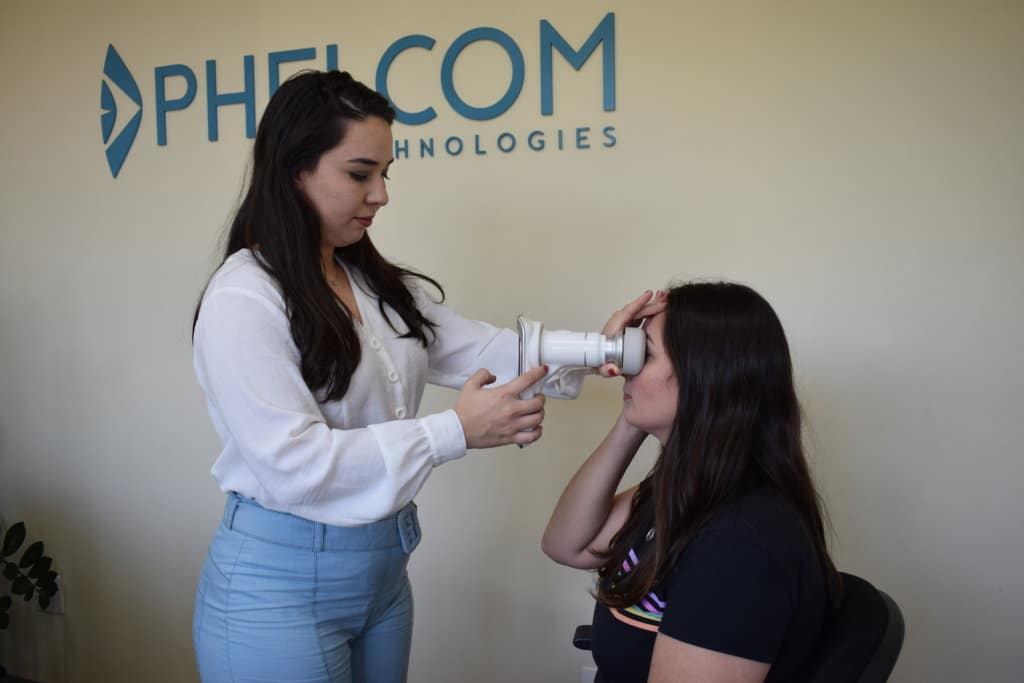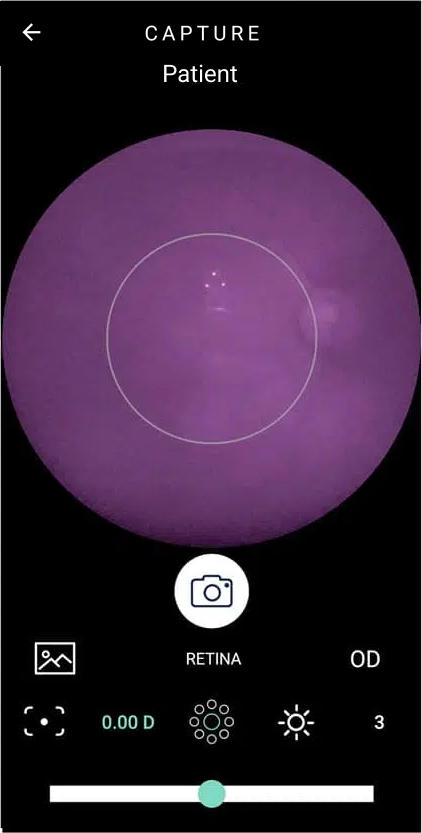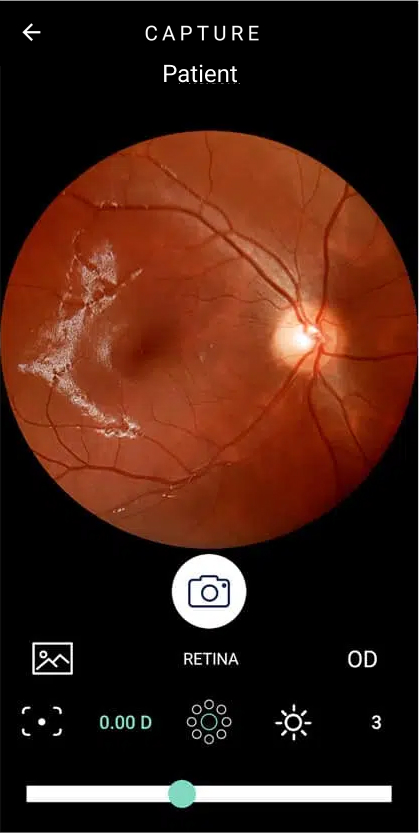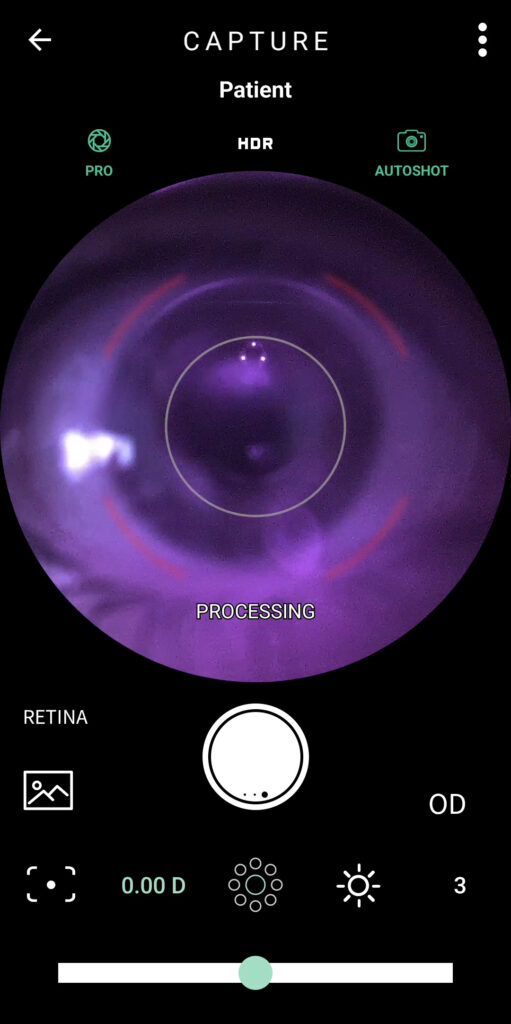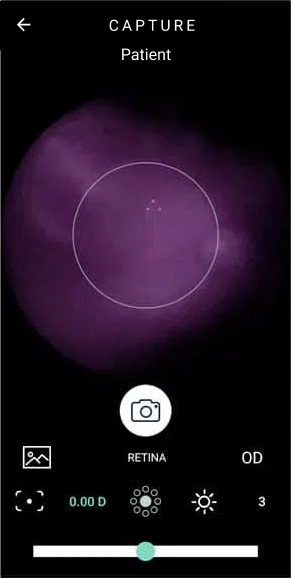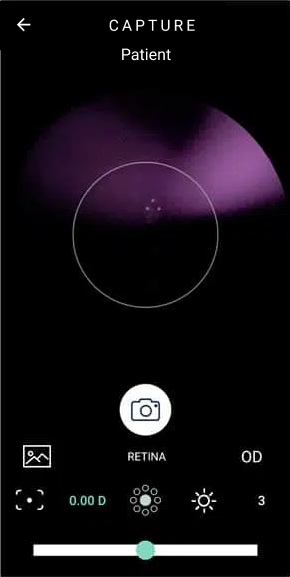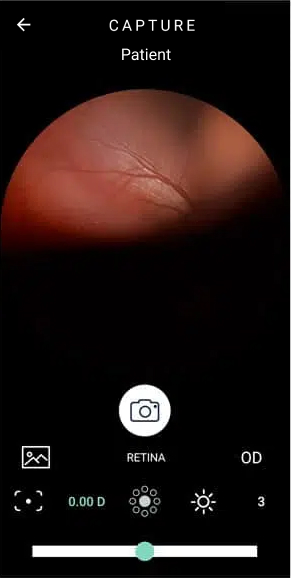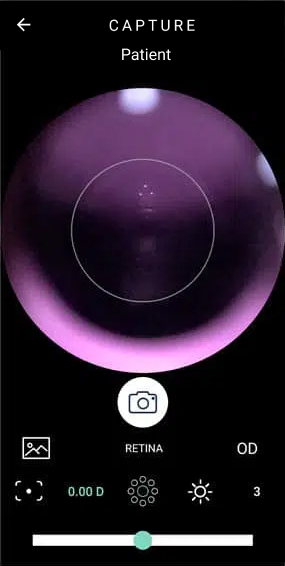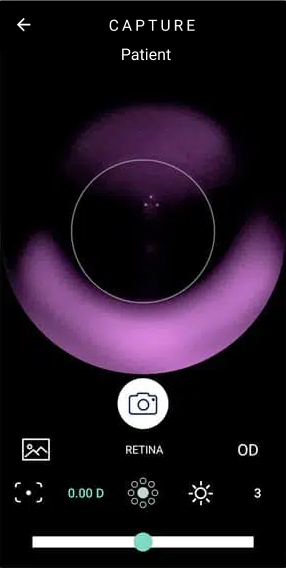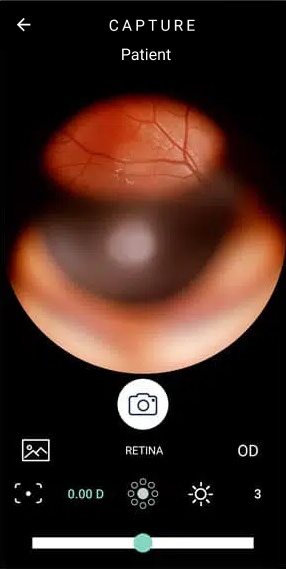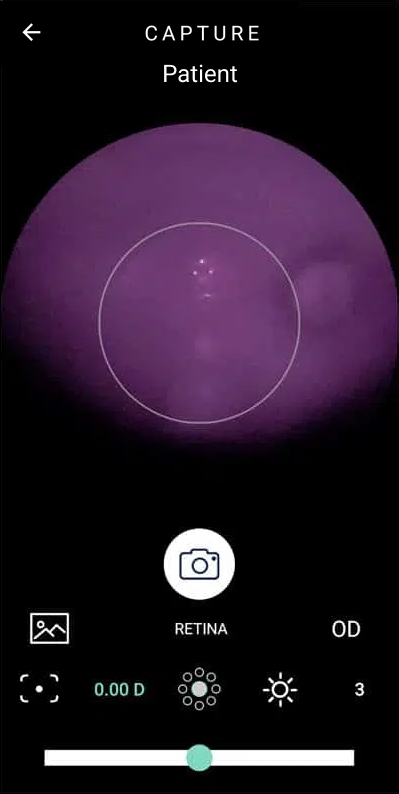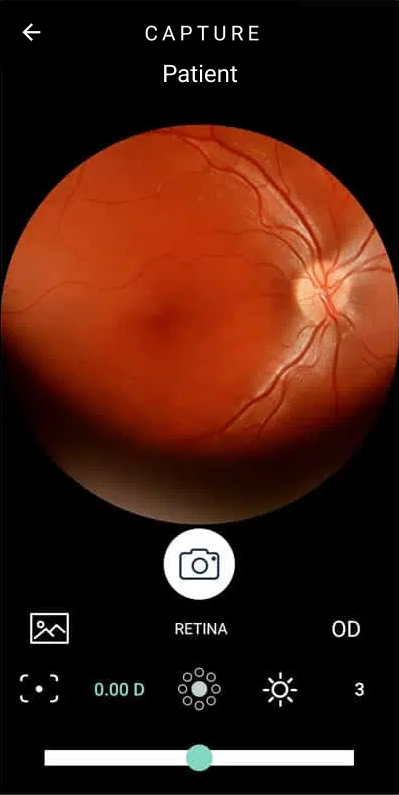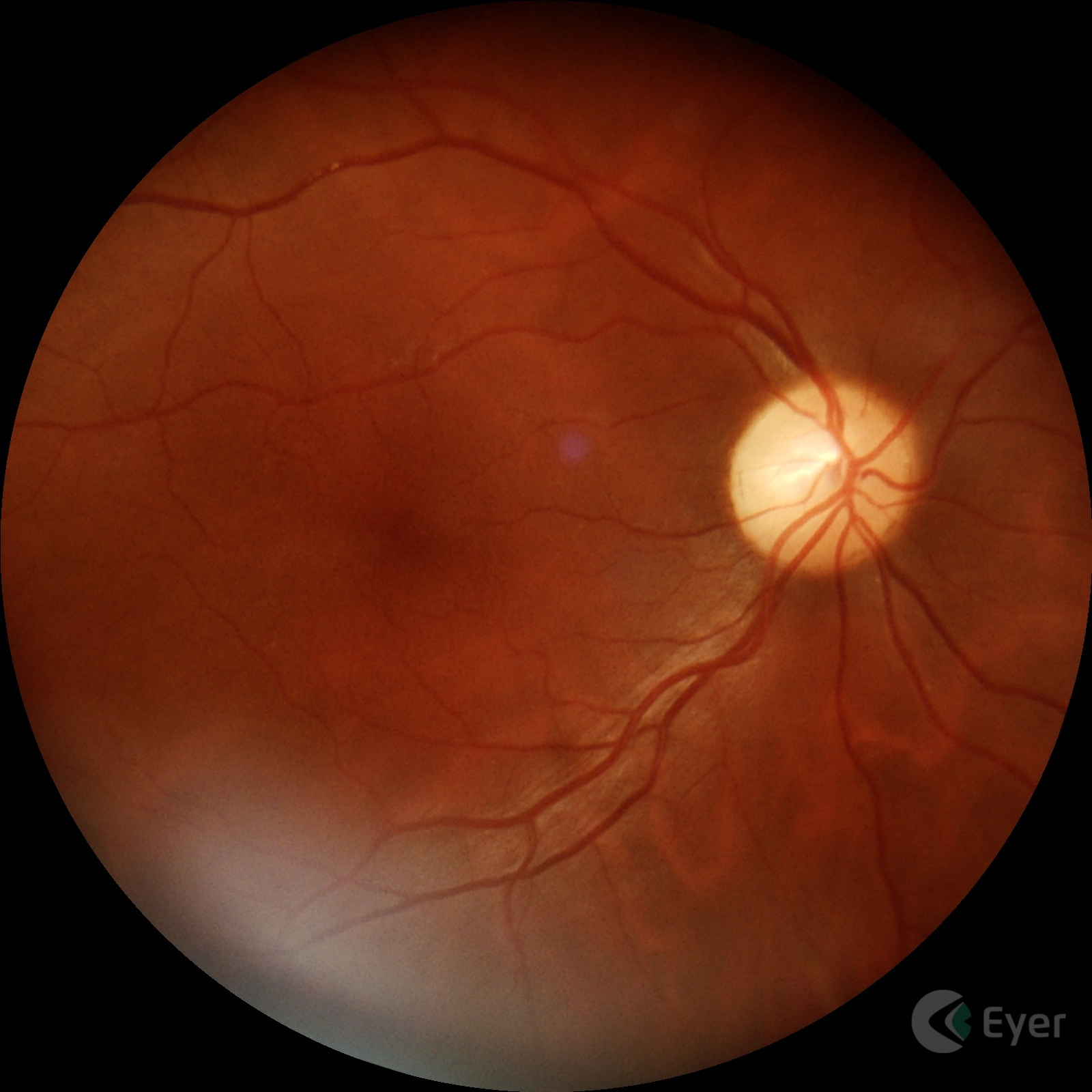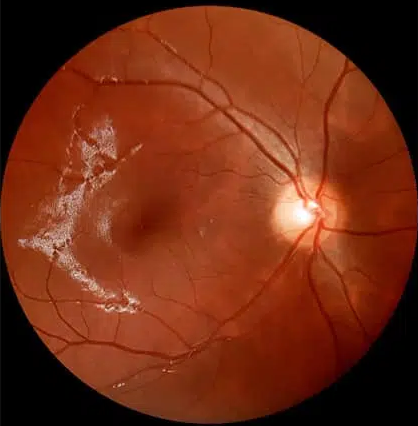When capturing images it is important to follow our recommendations to ensure that you take highest quality pictures possible, and to avoid some common problems.
Positioning
When capturing an image if the camera is not held perpendicular to the patient’s face, even if the image on the screen shows the retina properly focused, the capture will contain a glare where external light has entered the camera during capture.
If you don’t position the device correctly, some external light can be captured. This can be identified by the white glare on the edges of the image, as shown below. To correct this mistake, ensure you are holding the device perpendicular to the patient’s face and try to stay at the same level as them, either both sitting down or standing up.
If your pictures contain black spots on the edges, bring the device closer to the patient’s face and before taking the picture ensure that the retina is evenly illuminated. Everything that appears dark before the photo will continue being dark in the photo.
Focus
If the photo is blurry, like in the example on the left you need to adjust the patient’s diopter in the settings.
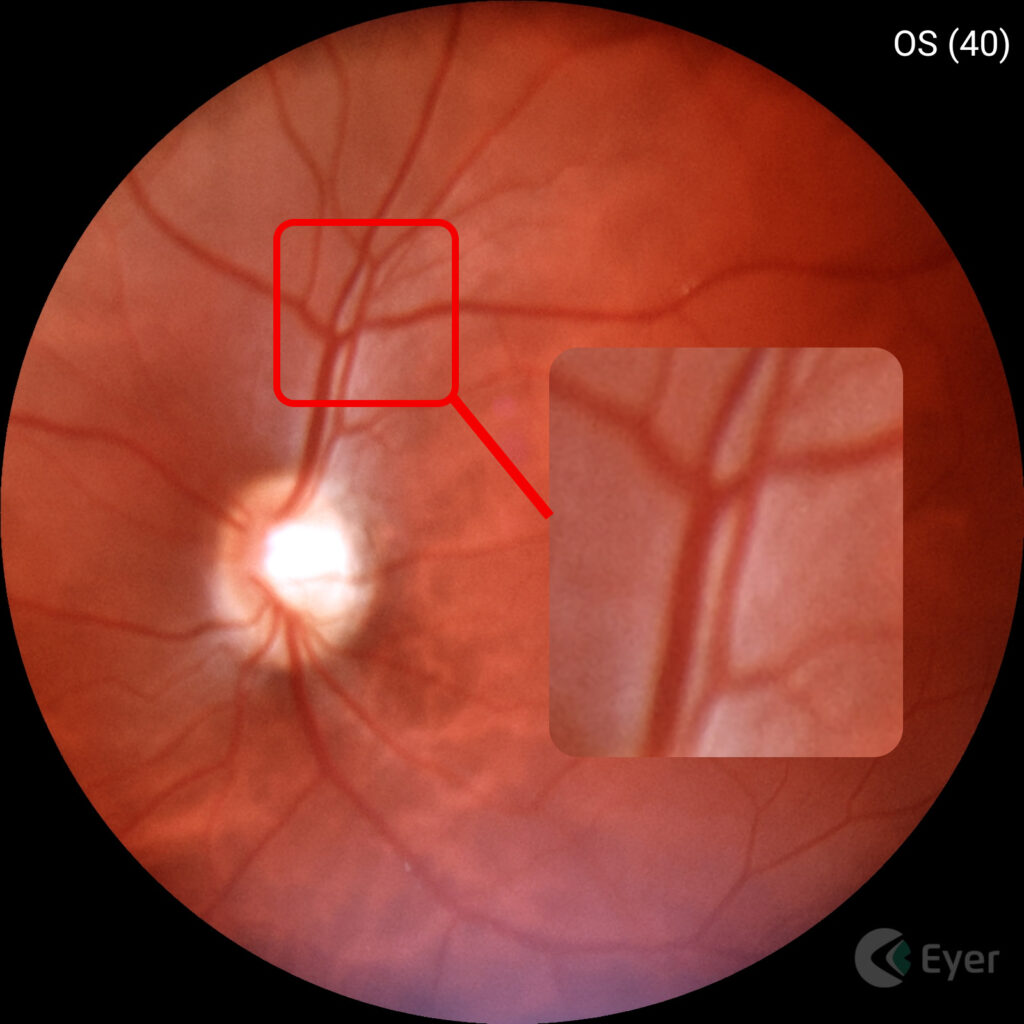
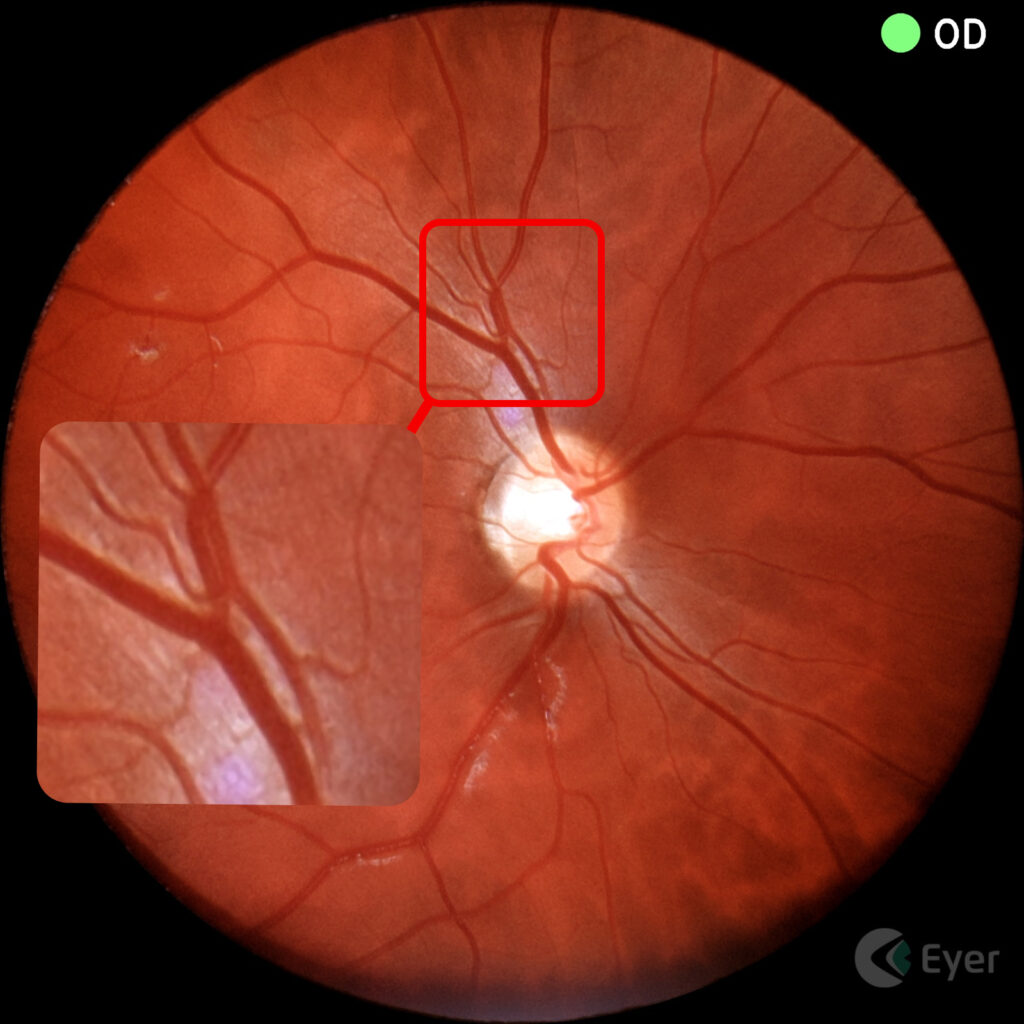
When taking pictures you should use the appropriate mode of capture (anterior for anterior pictures and retina for posterior segment pictures), otherwise the quality of the pictures will be affected.
Distance
The camera can be too close to the patient’s retina, not allowing the light of the flash to illuminate it properly.
Your camera can be too far from the patient’s retina, and parts of the iris are captured instead the retina.
The camera can be focused on the retina, however the retina (purple part) is not filling the whole image.
Orientation
The camera can be tilted, making it so that the patient’s optic nerve is not correctly positioned in the picture.

